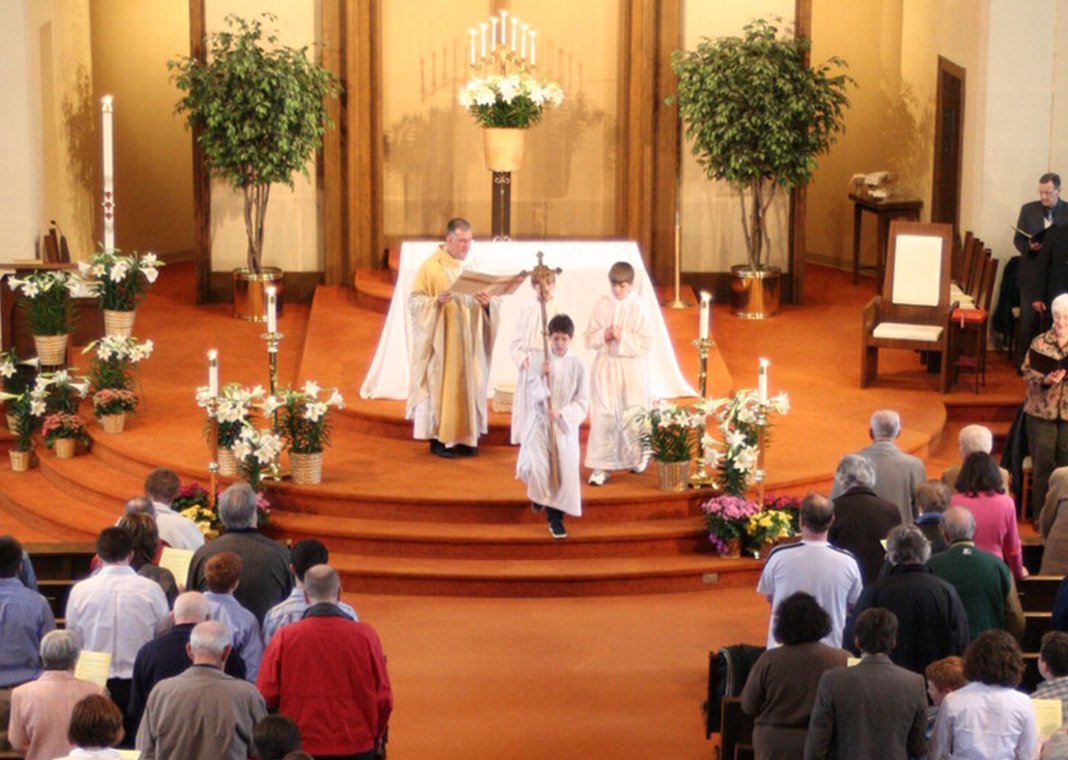
One of the boys in my group asked, “Do you go to church?”
We were discussing the Mass, and he seemed genuinely surprised when I told him that, yes, I do go to church for weekly Mass. He admits he only goes to church occasionally, and he, like many kids in our programs, is more the norm than the exception.
I don’t have the secret formula for how we change this trend and encourage those we serve to go to Mass. But here are four thoughts for making connections between the Mass and class discussions.
1. Talk about Mass throughout the year, not just in the week the curriculum dictates to “teach the Mass.” In my class, for instance, we do a session devoted to the parts of the Mass, but we also talk about the sacraments, which offers us another opportunity to talk about the Mass. Breaking down the Creed as part of a session on the early Church helps young people to understand the words we say during our celebration of Mass. Talking about miracles gives the connection between the biblical story of healing the centurion’s servant and our Mass response that “I am not worthy that you should enter under my roof, but only say the word and I shall be healed.” A lesson on the parables should remind the young people that we hear these stories as the Gospels during Ordinary Time.
2. Emphasize the invitation. I like to emphasize that we receive the Eucharist at Jesus’ invitation. When we don’t go to Mass, we are turning down an opportunity to attend an event with Jesus present. I don’t want to say this to my group as a scolding, but hopefully to get them to think about the Mass in a different, more positive way—as attending a celebration.
3. Organize your lesson plans according to the liturgical year. I don’t teach the chapters in our textbook in the order they are presented. Instead, I plan the year out in advance, aligning the themes of the chapters to our liturgical calendar. That way, we can talk about the birth of Christ during December, the Last Supper and the Passion during Lent, and the post-Resurrection appearances during Easter season. Mary and the Rosary can be talked about during October or May. Not every session will align perfectly, but by talking about the stories encountered at Mass at the appropriate times of the year, young people can begin to appreciate the liturgical cycles.
4. Seize opportunity. I can’t imagine being a catechist who couldn’t answer my student’s question positively, that I do go to Mass regularly. The question gave me an opportunity to talk more personally about why I go to Mass and why, more broadly, I am Catholic. And that type of conversation is important for evangelization efforts. So while I’m saddened that my student was surprised by the fact that someone he knew was a church-goer by choice, I’m grateful for the question and the conversation.
How do you make connections between the Mass and your class curriculum? Have you had the opportunity to talk about your experience at Mass with the young people in your group?
Image: © Kasey Hund Photography.




Every week in my classes we have a “Gospel Gathering” (as named by the DRE, who asks all catechists to do this). We gather around our prayer table which has a cloth of the color of the liturgical season, the Bible, a crucifix, (electric) candle and often some other object related to the Gospel or season. After singing the Alleluia, I proclaim the Gospel for the upcoming Sunday and we have a short discussion about the key points for understanding. Then we close with a prayer. Thank you Loyola for the Sunday Connection which I use weekly to prepare for this–and I believe it was Joe Paprocki where I got the phrase “its more Mass than class” to remind me to keep tying our sessions to Mass. Throughout the year I have homework sheets that relate to upcoming Sunday Mass. I teach 2nd grade (First Reconciliation and First Eucharist) so teaching about the Mass is integrated into the Eucharist books.
A tie-in to your point #2 – emphasize the invitation. I’ve used a discussion our DRE shared based on Matthew 22 – the Parable of the Wedding Feast. The students are asked to name their favorite professional athlete or music/movie celebrity. Then they are asked for a show of hands if they would accept an invitation to dinner, along with their parents with their favorite athlete/celebrity – they would be guests at a great restaurant, with lots of opportunity to speak with the celebrity. All hands go up. Then they are asked for a show of hands – would they plead and insist that their parents rearrange their schedule if the date and time for this special dinner conflicted with something else important? All hands go up again.
Then the class reads, or the Catechist summarizes the Parable of the Wedding Feast – the King (God the Father) is giving a wedding feast/banquet for his son (Jesus) and we are invited to join the celebration! I also give the youth some images to think about – the Holy Mass and the celebration of the Eucharist is a meeting of Heaven and Earth. Holy Mary, Angels, and the Saints are all present and celebrating with us. What graces and blessings are in store for us to receive when we receive Jesus in the Eucharist – how can we turn down that invitation?